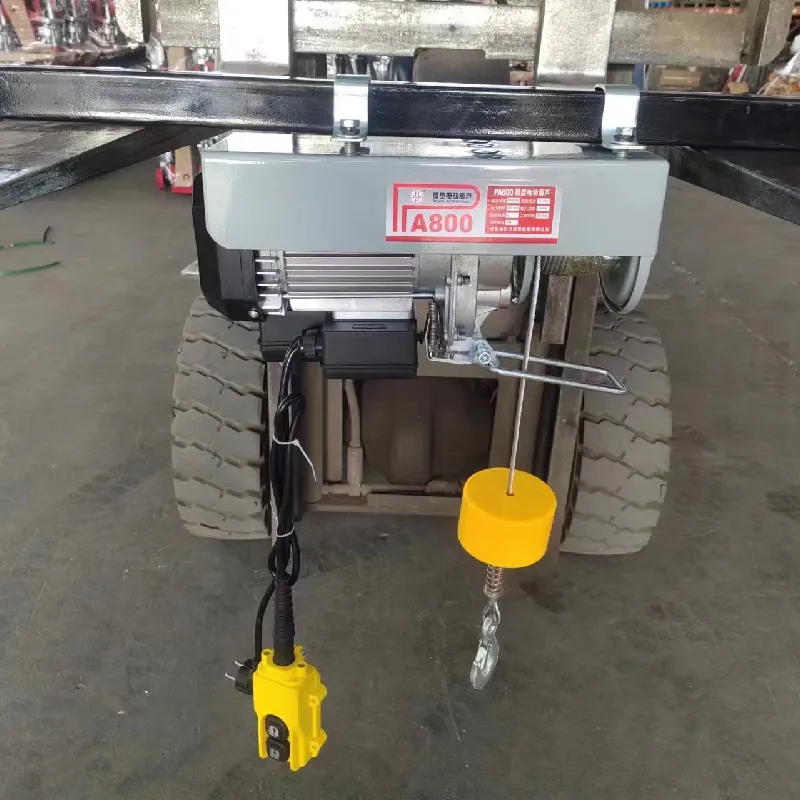


Understanding Chain Blocks and Lever Hoists Essentials of Lifting Equipment
In the realm of material handling and lifting operations, the significance of reliability and efficiency cannot be overstated. Chain blocks and lever hoists are two essential tools that play a crucial role in these operations, providing a mechanical advantage that enables the safe and efficient lifting of heavy loads. In this article, we will explore the features, applications, and differences between these two types of lifting equipment.
Chain Blocks A Mechanical Marvel
A chain block, also known as a chain hoist, operates on a simple yet effective principle using a chain to lift heavy loads. The basic components of a chain block include a chain, a hook, a lifting mechanism, and a housing. The chain is looped around gears, and when the operator pulls on the chain, it engages the gears, allowing the load to be lifted.
One of the most significant advantages of chain blocks is their ability to lift heavy weights with minimal effort. This is particularly beneficial in industrial settings where heavy machinery, equipment, or materials need to be raised to elevated work areas. Chain blocks are available in various capacities, making them suitable for a wide range of applications, from construction sites to warehouses.
Chain blocks also feature safety mechanisms, including overload protection and a locking mechanism, which prevents accidental lowering of the load. Their robust construction ensures durability, making them a reliable choice for demanding lifting tasks.
Lever Hoists Precision and Control
Conversely, a lever hoist, or lever chain hoist, is designed to provide more control when handling loads, especially in tight or restricted spaces. The operation of a lever hoist involves using a hand-operated lever to lift, lower, or pull a load. Unlike chain blocks, lever hoists allow for precise positioning of the load, making them ideal for tasks requiring finesse.
The lever mechanism works on the principle of mechanical advantage. By pulling down on the lever, the operator can lift the load with less effort than would be required to lift it directly. This makes lever hoists particularly suited for applications like vehicle recovery, rigging, and maintenance tasks where precision is paramount.

Lever hoists are also compact and lightweight, making them easy to transport and maneuver. They are often used in construction sites, workshops, and even by outdoor enthusiasts for activities such as winching and lifting equipment.
Key Differences and Considerations
While both chain blocks and lever hoists serve the purpose of lifting, they do so in different manners and are suited for distinct tasks
. Here are some key considerations when choosing between the two1. Load Capacity Chain blocks generally offer higher load capacities, making them the preferred choice for heavy-duty lifting operations. Lever hoists, while versatile, typically have lower weight limits.
2. Operating Environment Chain blocks are often used in fixed locations where heavy loads need to be lifted repeatedly, while lever hoists excel in situations that require mobility and versatility in load positioning.
3. Ease of Use Chain blocks can lift loads quickly but may require more physical strength for operation. Lever hoists provide a mechanical advantage but may require more time for lifting due to the manual operation of the lever.
4. Space Constraints The compact design of lever hoists makes them ideal for confined spaces where a chain block may not fit or be practical.
Conclusion
In summary, both chain blocks and lever hoists are invaluable tools in the lifting and material handling industry. Understanding their features, advantages, and best-use scenarios is key to selecting the right equipment for specific tasks. Whether lifting heavy machinery on a construction site with a chain block or carefully positioning a load in a tight space with a lever hoist, these tools enhance safety and efficiency in operations. By investing in high-quality lifting equipment and adhering to safety protocols, users can ensure successful outcomes in their material handling processes.



